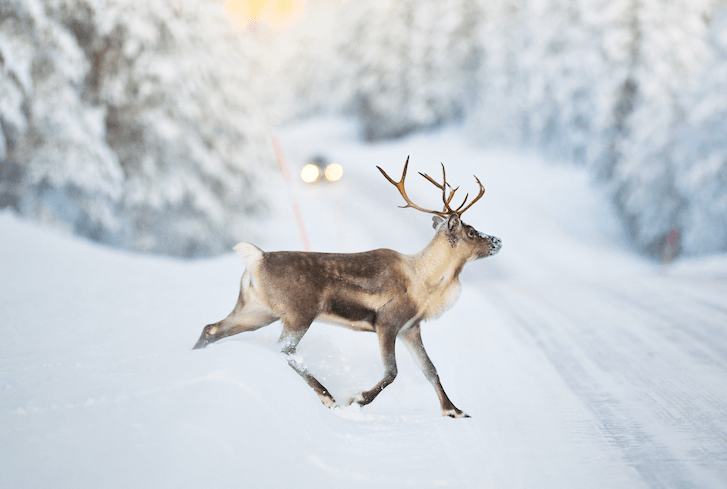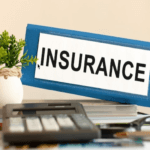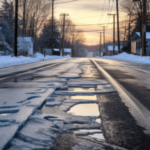
Don’t Hit a Deer: Tips to Avoid a Collision
Automobile insurance is an essential aspect of owning a vehicle, providing protection for both your car and your financial well-being. Accidents can happen at any time, and collisions with animals, such as deer, are a common occurrence. To avoid the financial burden and potential risks associated with these accidents, it is crucial to have comprehensive automobile insurance coverage. In this article, we will explore the importance of automobile insurance, particularly in regions like the Northeast and New England where deer collisions are prevalent. We will also provide tips on how to prevent deer collisions and navigate the aftermath of such incidents.
The Significance of Automobile Insurance
Automobile insurance serves as a safety net, offering financial protection in the event of unforeseen accidents. It covers damages to your vehicle, medical expenses, liability for injuries or property damage caused to others, and even legal costs. Without insurance, you may be responsible for paying for these expenses out of pocket, which can be financially devastating.
In the Northeast, where deer collisions are common, having automobile insurance is especially critical. The densely populated regions of the Northeast, including New England, have a higher risk of deer-related accidents due to a combination of factors such as wildlife habitats intersecting with roadways and the seasonal patterns of deer activity.
Understanding Deer Behavior and Risk Factors
Deer collisions often occur during specific times of the year and in particular locations. Understanding deer behavior and risk factors can help you anticipate and mitigate the chances of encountering these animals on the road.
Seasonal Patterns
Deer are most active during their mating season, which typically occurs between October and December. During this period, deer are more likely to be on the move, increasing the risk of collisions. The National Highway Traffic Safety Administration reports that one million car accidents involving deer occur each year in the United States, resulting in hundreds of deaths and thousands of injuries.
High-Risk Locations
While deer collisions can happen anywhere, certain areas pose a higher risk due to their proximity to wildlife habitats. The Northeast, including states like West Virginia, Montana, Pennsylvania, New Hampshire, Wisconsin, Maine, Vermont, South Dakota, Virginia, and Missouri, experiences a higher frequency of deer-related accidents. These states are known for their scenic landscapes and extensive wildlife populations, making it important for drivers in these areas to be especially vigilant.
Tips to Avoid Deer Collisions
Preventing deer collisions requires a combination of attentiveness, caution, and knowledge of effective strategies. By following these tips, you can reduce the likelihood of encountering a deer on the road:
1. Stay Alert and Watch for Signs
Being aware of your surroundings is crucial to avoiding collisions with deer. Stay awake and attentive while driving, regardless of the time of year. Additionally, pay attention to signs indicating deer crossings. Studies have shown that crash risks can be reduced by up to 34% when signs are posted.
2. Know the Patterns
Deer are most active at dawn, dusk, and a few hours after sunset. If you are driving during these times, exercise extra caution. Deer often travel in groups, so if you see one crossing the road, slow down and wait, as more may follow.
3. Don’t Swerve
If a collision with a deer seems inevitable, it is crucial to remain calm and avoid swerving. Swerving can cause more severe accidents by colliding with other vehicles, guardrails, or trees. Instead, apply the brakes firmly, hold onto the steering wheel, and bring your vehicle to a controlled stop.
4. Upgrade Your Headlights
To improve visibility during low-light conditions, consider upgrading your headlights to LED or HID bulbs. These bulbs emit a brighter light, making it easier to spot animals, including deer, from a distance.
5. Be Wary of Wooded Areas
If you are driving on a road bordered by woods or forested areas, be cautious as deer may be hiding just out of sight. Slow down and maintain a heightened level of alertness in these locations.
6. Use High Beams
When driving in low-light areas with few or no streetlamps, use your high beams to increase visibility. However, remember to turn them off if you see another vehicle approaching to avoid blinding other drivers.
7. Pay Attention to Road Signs
Deer crossing signs are placed in areas with a high deer population. Keep an eye out for these signs and adjust your driving accordingly.
8. Assume There Are More
Deer rarely travel alone, so if you spot one crossing the road, assume that there may be others nearby. Stay cautious and maintain a safe speed until you are sure there are no additional deer in the vicinity.
9. Avoid Relying on Deer Whistles
Aftermarket devices, such as deer whistles, claim to scare off animals. However, there is no scientific evidence supporting their effectiveness. Therefore, it is best not to rely solely on these gadgets for deer collision prevention.
What to Do If a Deer Collision Occurs
Despite your best efforts to avoid a deer collision, accidents can still happen. If you find yourself in this situation, follow these steps:
1. Stay Calm and Assess the Situation
Remain calm and assess the immediate surroundings for any potential dangers. If it is safe to do so, pull over to the side of the road, away from traffic.
2. Contact Authorities and Insurance
Notify the police and your insurance company immediately. It is essential to document the incident and provide accurate information for insurance purposes.
3. Do Not Approach the Injured Animal
Deer can become disoriented and may pose a threat if approached. Keep a safe distance and allow professionals, such as animal control or the police, to handle the situation.
4. Document the Incident
Take photos of the scene, including any damages to your vehicle and the surrounding area. This documentation will be valuable when filing an insurance claim.
The Importance of Comprehensive Automobile Insurance
Having comprehensive automobile insurance coverage is vital for protecting yourself and your vehicle from the financial implications of deer collisions. Comprehensive insurance policies typically cover damages resulting from animal collisions, ensuring that you are not burdened with significant repair costs.
In the Northeast, where the risk of deer collisions is higher, it is even more crucial to have appropriate coverage. Contact your insurance provider, such as Safety Northeast Insurance, to discuss your policy options and ensure that you have adequate protection.
Conclusion
Deer collisions pose a significant risk to drivers, particularly in regions like the Northeast. By understanding deer behavior, staying alert, and following preventive measures, such as the guidance provided by our friends at Safety Insurance, you can reduce the likelihood of these accidents. However, accidents can still occur, making comprehensive automobile insurance essential. Protect yourself, your vehicle, and your finances by securing proper coverage and following the necessary steps in the event of a deer collision. Stay vigilant, drive safely, and enjoy the journey while keeping yourself and your automobile protected.

 Previous Post
Previous Post Next Post
Next Post